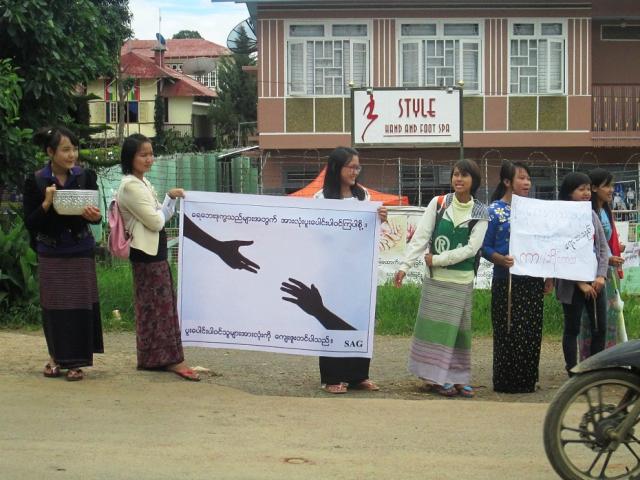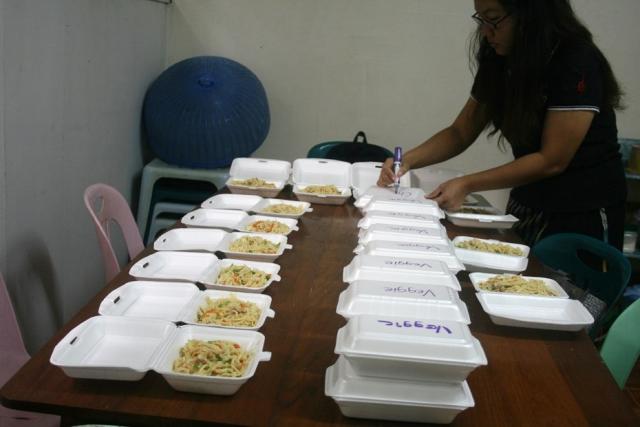The fury and ferocity of floods becomes more amplified when one sees the situation first hand. The data, descriptions and dashboards of information fail to project the face of people and their experience at the ground level. At the invitation of the Bishop of Kalay (Sagaing division – the place that took the brunt of floods), we visited Kalay. As the plane descends (roads are still to be repaired) an eerie scenario unfolds. A vast expanse of clay mud covers hundreds of acres where there were once villages and flourishing farming communities. Only water now.
There is often flooding in Myanmar in the monsoon season but this is some of the worst in decades. The floods were made worse by Cyclone Komen, which ploughed through the country in late July.
Driving on the roads, seeing the refugees of this disaster huddling under the tarpaulins on the roadside, ruminating their fate and future, brought a frustrating feeling of déjà vu. In 2008, Cyclone Nargis had wrought widespread destruction in Myanmar.
Pope Francis’ call for urgency in climate change and its effect on the poor is timely. The respite in rains exposes greater tragedy. The number of displaced people is increasing. The government says around 1.7 million people are in need of assistance. Farming as a livelihood has become precarious, with tons of mud dumped on once fertile fields.
Two of the most affected regions, the Chin and Rakhine states, have a 70 percent poverty rate, a high rate of migration, a lack of infrastructure, and in Rakhine, also considerable conflict.

In Chin state, the Chin hills have collapsed in many places because of landslides, and its capital, Hakha, is in bad shape. Four of its five wards have been declared dangerous to live in. Relocation is glaring in the face of the survivors who do not want to leave their home. Hakha’s future is tied to the national and international compassion and competence in relocation.
The flood brought forth another flood: a flood of compassion. Youth in Yangon and other major cities swung into action, collecting relief material and money and distributing supplies. The Church is in the thick of the relief efforts. Six dioceses are affected and the 16 Caritas networks in the country are responding to their need.
Kalay in Chin state is one of the worst affected areas. Approximately 143,000 people are directly affected and more than 10,000 houses have collapsed. The Salesians have organized an army of youth, more than 125 boys and girls, to help the poor clean their houses of the solidified mud and rectify the damage. This has enabled some of the people to return to their homes. Rice is in short supply, and the Church has distributed more than 1,000 bags of rice.
 The Jesuits have been supporting a remote village with water and food, and have contributed to the emergency funds. To check the effectiveness of our process, a visit was made to a village to which the people have just returned. Food was distributed to 60 families. The Jesuits will continue to reach out to remote villages, helping them with temporary shelter, water and sanitation facilities.
The Jesuits have been supporting a remote village with water and food, and have contributed to the emergency funds. To check the effectiveness of our process, a visit was made to a village to which the people have just returned. Food was distributed to 60 families. The Jesuits will continue to reach out to remote villages, helping them with temporary shelter, water and sanitation facilities.
At the request of the diocese, the Jesuits are also designing the ongoing response and setting up a coordinating mechanism. A meeting was held with all stakeholders and a disaster response task force has been formed.
An action plan is being developed but it will take at least three months to design, train and accompany the disaster recovery process. The diocese and the Salesians are planning to provide assistance until the rehabilitation stage, and the Jesuits will have to explore what they can do to support long term rehabilitation.
The Jesuits have offered to help the Pyay diocese, and the bishop suggested that they consider the livelihood needs of farmers for rehabilitation. But now the need for emergency relief continues. Collaborating with the Sisters of Lady of the Missions (RNDM), emergency food supplies were delivered to Shwe Taung Su village, chosen because it is difficult to reach and a place that other donors cannot go. The whole village was affected and nearly 400 people are in need of assistance.
Rice, oil, tarpaulin for roofing, and boots for 400 people have been sent. On August 20, two trucks full of supplies went to the riverbank. The villagers came in two small boats to fetch the donated 200 bags of rice, 110 pairs of long boots, 115 bottles of cooking oil and tarpaulin for roofing for seven houses and packages of drinking water.
In Chin state, where there are 53 sub-tribes, it is hoped that this disaster will bring unity among the people. It is the Bible belt of Myanmar with Kalay town boasting of 140 churches and 30 Bible colleges. However conflict between the churches has kept the region underdeveloped.
Urgently the people need food and shelter. They need schools. They need bridges and roads. The people displaced from the town are returning but the villagers have nowhere to return to. Their villages are gone and assets are gone, and the future holds no hope. Only the world’s attention and government resolve can avert what could become one of the saddest tragedies of Myanmar.
This is an excerpt of an update provided by Fr C Amal SJ, an Indian Jesuit missioned to Myanmar, on the Myanmar flood relief efforts.
If you wish to support the relief efforts in Myanmar, donations can be made through the Jesuit Conference of Asia Pacific. Please contact jcapsj@jcapsj.org for the bank transfer details. Please also inform us if you are making a transfer so that we know where to channel your donation.


